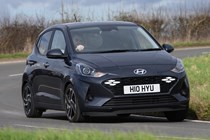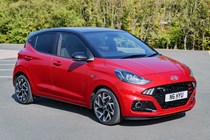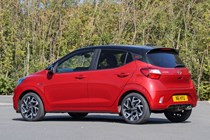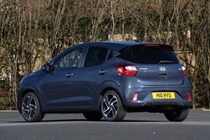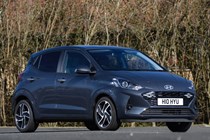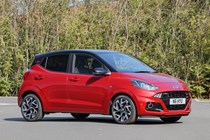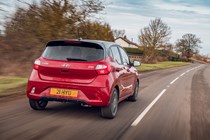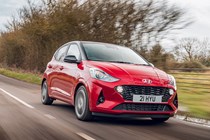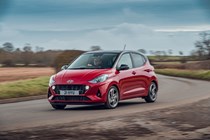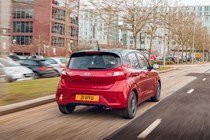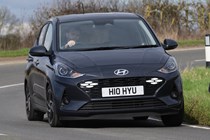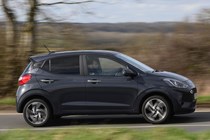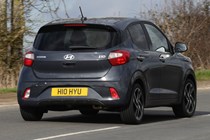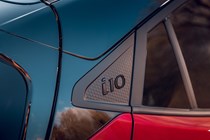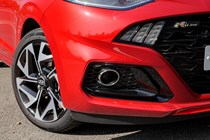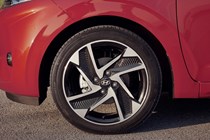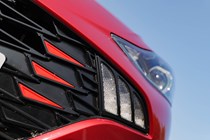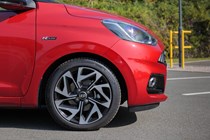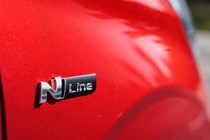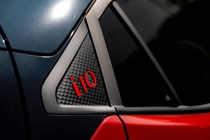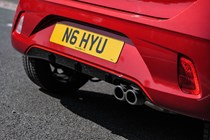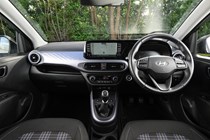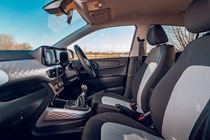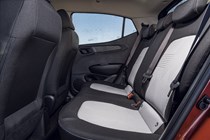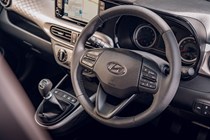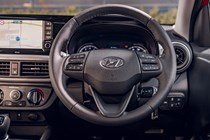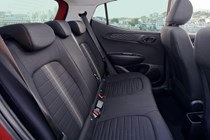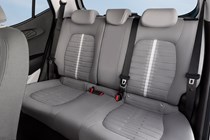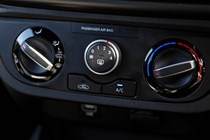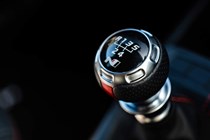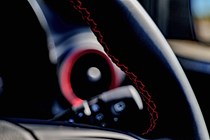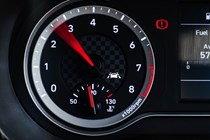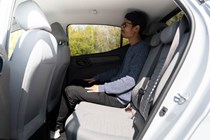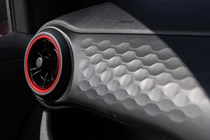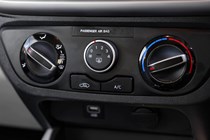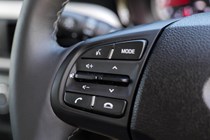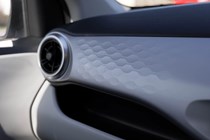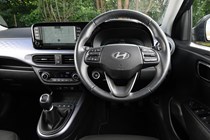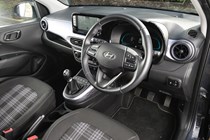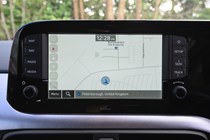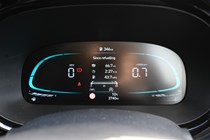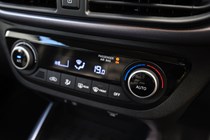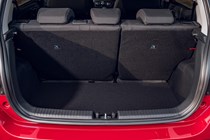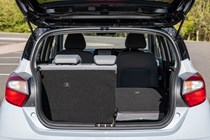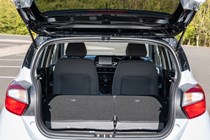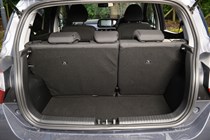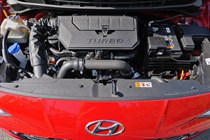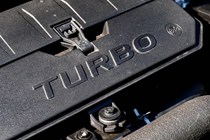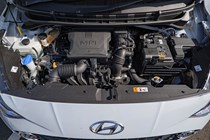
Hyundai i10 boot space, practicality and safety
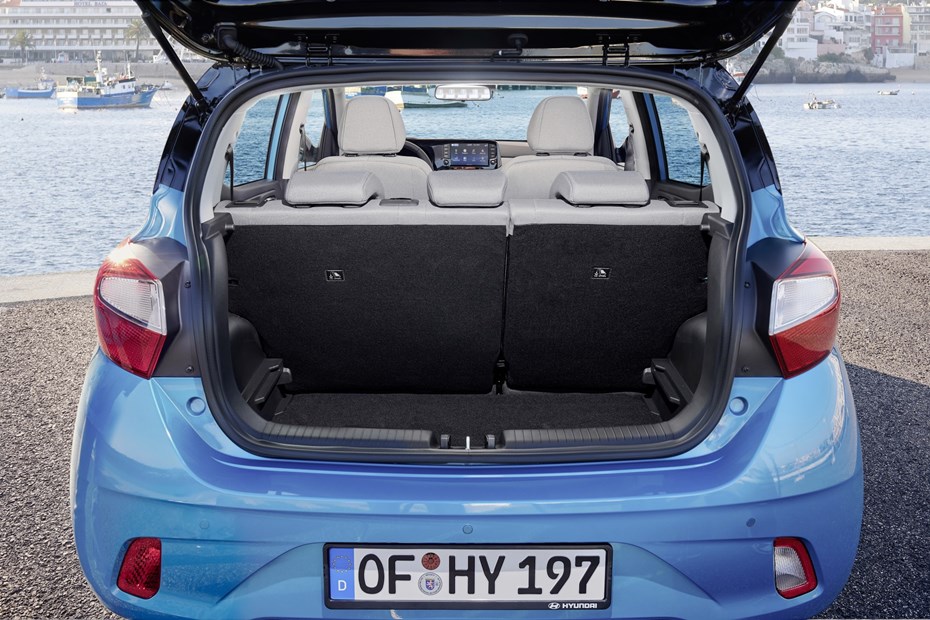
- Amazingly spacious for such a small car
- Space for four adults and some of their luggage
- Could easily be a small family’s only car
How much space is there?
The i10’s always been a very practical little car, but things have somehow improved for this new model. As with its predecessors, there’s technically room for five in here – at least, there are five seatbelts – but it’s better suited to being a four-seater with the occasional capacity for an extra body.
As a four-seater, it works fantastically. Whether you’re sat up front or in the back, there’s good leg- and headroom. Four six-foot adults can comfortably sit for a decent period of time, without having to bend their necks under a low roofline or manoeuvre their knees around unforgiving seatbacks. There’s even room underneath the front seats to slide your feet.
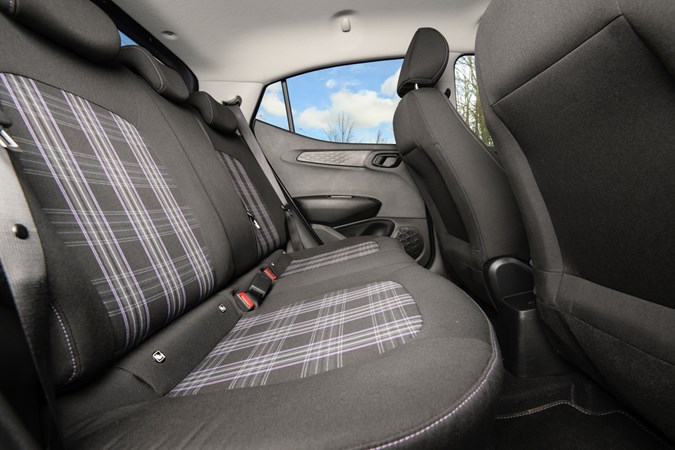
The fixed-height front passenger seat feels a little high-set, but again, there’s loads of leg and headroom.
Boot space and storage
The load area might look a little narrow at first, but there is 252 litres of boot space available. This compares favourably with the 231 litres you get in a Toyota Aygo X and beats other rivals, too. Sure, you won’t be moving house in a car like this, but it will easily accommodate five or six big shopping bags or a couple of suitcases.
Fold down the rear seats and there’s even more room, with the i10’s high roofline meaning you can pack an awful lot in if you head for a trip to that well-known Swedish furniture store. They split 60:40, so you can choose whether you want to give one passenger plenty of room or utilise more of the car’s length. There’s no two-level boot floor to make for easier loading, though.
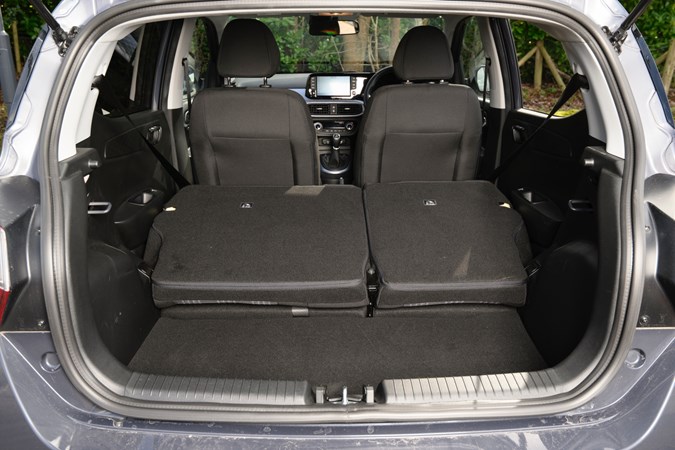
Interior storage is impressive too, with a large glovebox and a usefully-lipped shelf above it. There’s a pair of cupholders in the centre console placed alongside a few storage areas in various shapes and sizes to accommodate a range of items.
A platform also sits in front of the gearlever with a USB port and 12V socket – on Premium trim and up, this holds a wireless smartphone charger. Compared to a smaller model such as the Toyota Aygo X, the difference is night and day – you could truly use the i10 as a small family’s sole transport.
You have door bins but not much else when it comes to storage in the rear seats. You don’t get map pockets on the front seatbacks for example, but this is typical for cars in this class.
Is it easy to park?
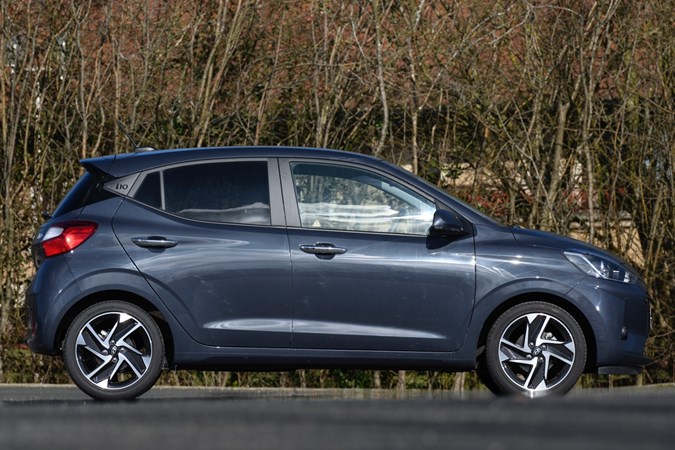
Finding a space big enough for a car this small is predictably easy, and visibility is good. Helping things further are standard fit rear parking sensors and a reversing camera on all trim levels.
Safety
- Three-star Euro NCAP safety rating
- Lots of safety kit, but not as clever as larger cars
- Protection in a crash reasonable
The previous i10 scored four stars when it was tested back in 2013. Times change, however, and even with a whole heap more safety equipment than its predecessor the new i10 only scores three stars.
That’s due to issues with its pedestrian safety, with stiff windscreen pillars providing marginal head protection and an autonomous emergency braking system that can’t recognise cyclists or smaller pedestrians very well.
Is that a disadvantage? Well, the i10’s pretty much in line with all of its competitors on this front – the only models that score higher do so under an older testing procedure, so you shouldn’t discount it on these grounds. By the standards of the class this is a safe car.
As befits a 2020 model the new i10 comes with lots of standard safety equipment, chief among which are lane-departure warning and autonomous emergency braking (AEB) with pedestrian detection – two items set to become mandatory equipment. As such, it’s good to see Hyundai including these ahead of time, in contrast to the Volkswagen Up, which now has lane-departure warning but not AEB.
Euro NCAP rating
| What is Euro NCAP? ⓘ | |
|---|---|
| Adult Occupant: | 69% |
| Child Occupant: | 75% |
| Vulnerable Road User: | 52% |
| Safety Assist: | 59% |
Equipment and options
- 3x3 point rear seat belts
- ABS
- Air conditioning
- Alarm
- Body coloured bumpers
- Cloth seat trim
- Cruise control
- Driver`s airbag
- Electric mirrors
- Front electric windows
- Heated mirrors
- Height adjustable drivers seat
- Isofix child seat anchor points
- PAS
- Passenger`s airbag
- Rear electric windows
- Remote locking
- Side airbags
- Steering wheel rake adjustment
- Traction control
- Audio remote
- Parking sensors
- Sat Nav
- Front fog lights
- Audio remote
- Climate control
- Heated seats
- Parking sensors
- Sat Nav
- Front fog lights
- Heated seats
- Audio remote
- Climate control
- Parking sensors
- Sat Nav
- Steel wheels
- n/a
- n/a
- n/a
Dimensions
| Length | 3670mm - 3675mm |
|---|---|
| Width | 1680mm |
| Height | 1480mm - 1483mm |


